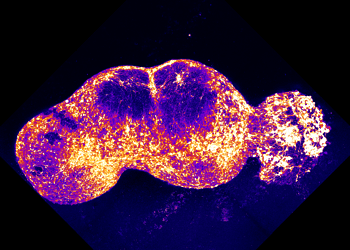
For more than a century, axons — the slender arms of brain cells — have been depicted as uniform tubes. These structures are responsible for transmitting information across neurons. But new research suggests the truth may be far more intricate, potentially rewriting biology textbooks.
Scientists at Johns Hopkins Medicine, led by Dr. Shigeki Watanabe, have found that axons aren’t the smooth, cylindrical cables we imagined. Instead, they more closely resemble “pearls on a string,” with a bubbly, variegated surface. “These findings challenge a century of understanding about axon structure,” Watanabe says.
The implications are vast. Axons, as Watanabe explains, are the brain’s communication highways, enabling everything from memory to learning. Their shape affects how signals move through the brain. This new understanding could provide insights into both normal brain activity and neurodegenerative conditions like Parkinson’s disease.
A Pearl-Like Arm

Watanabe’s curiosity about axon structure was sparked years ago during his research on worms. Pearl-like patterns in axons appeared repeatedly, leading to a question: Could this be a universal feature, rather than a sign of damage or disease? Collaborating with Swiss scientist Dr. Graham Knott and theoretical biophysicist Dr. Padmini Rangamani, Watanabe set out to test the idea.
The team used high-pressure freezing electron microscopy to preserve and observe axons in their natural state. Unlike traditional methods, which can distort cells, this technique freezes neurons rapidly, keeping their structure intact — like preserving a grape instead of dehydrating it into a raisin.
The researchers examined neurons from lab-grown samples, adult mice, and mouse embryos. Across tens of thousands of images, they found the same pearl-like structures, each measuring about 200 nanometers in diameter. These pearls are linked by thinner segments roughly 60 nanometers wide. These were not the previously known synaptic varicosities, where neurotransmitters are stored, but something entirely new. They named them “non-synaptic varicosities.”
But what causes this pearl-like shape? Using mathematical models, the team found that axonal membranes and their physical properties play a major role. Stiffer membranes, influenced by cholesterol levels, promoted pearling. Removing cholesterol made the membranes more fluid, reducing the pearl structures and slowing electrical signaling.
Redefining Brain Architecture
These structural changes affect how axons function. When the researchers stimulated neurons electrically, the pearls swelled slightly, and electrical signals sped up. But when cholesterol was removed, the pearls lost their swollen state, and signal speed returned to normal. This suggests that axonal morphology may play a role in how the brain processes and adapts to information over time.
“A wider space in the axons allows ions [chemical particles] to pass through more quickly and avoid traffic jams,” Watanabe explains. In other words, there’s an intimate link between the axon’s structure and function in the brain.
What does this mean for us? The team plans to examine axons in human brain tissue, focusing on samples from individuals with neurodegenerative diseases. They hope this work will reveal whether these pearl-like axons contribute to the pathology of conditions like Parkinson’s or Alzheimer’s.
The bubbly axons identified by Watanabe and his colleagues challenge long-held assumptions — but also open the door to new questions. How do these structures form? Do they help protect against disease — or exacerbate it? And what do they reveal about the brain’s ability to adapt and evolve?
As researchers continue to probe the mysteries of the brain, this study reminds us that even the smallest details — down to the nanometer — can reshape our understanding of how we think, feel, and adapt.
The findings appeared in the journal Nature Neuroscience on Dec. 2.






